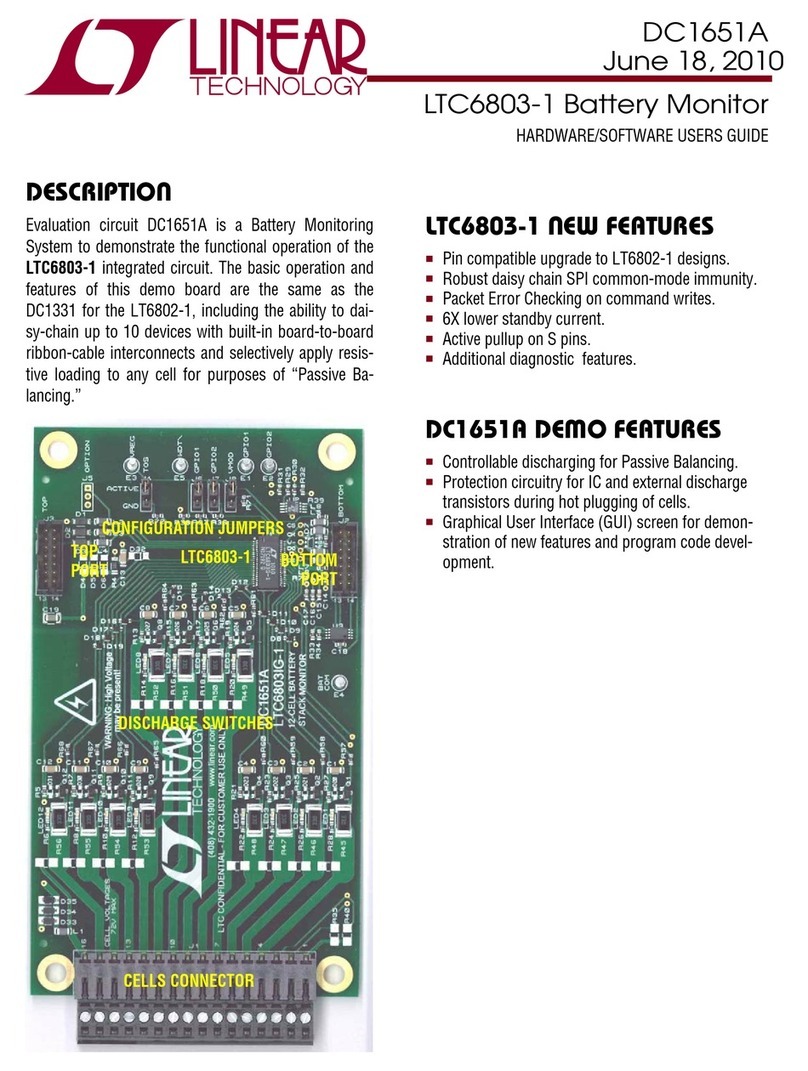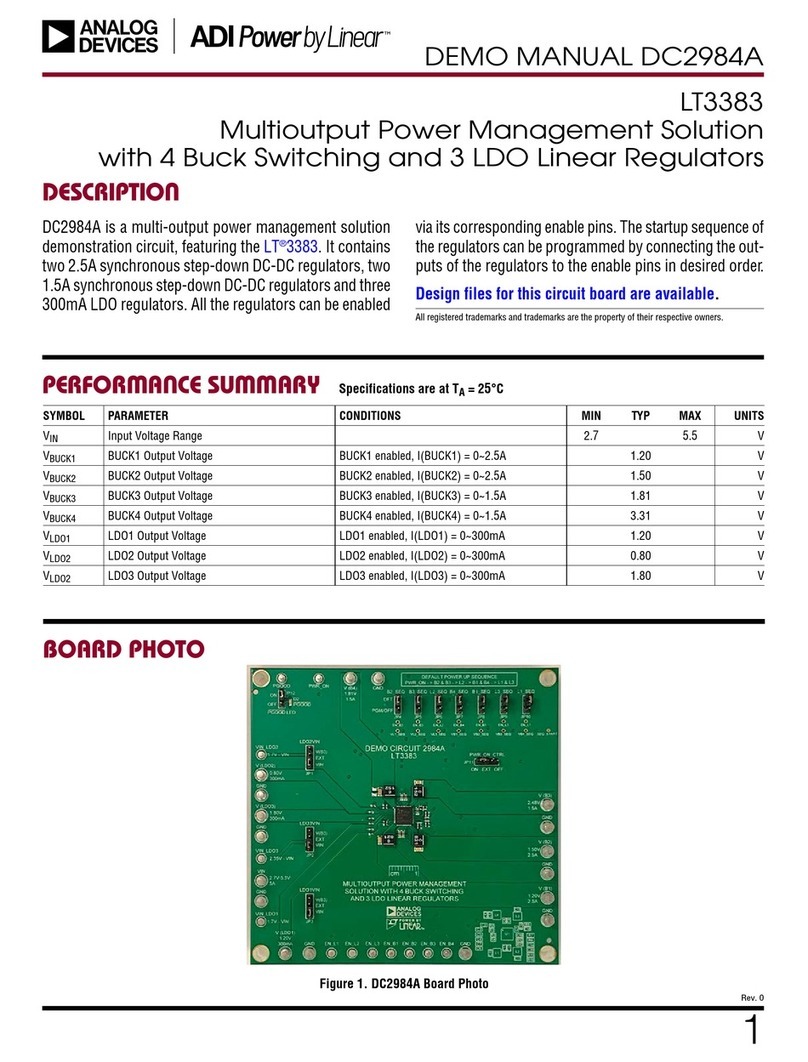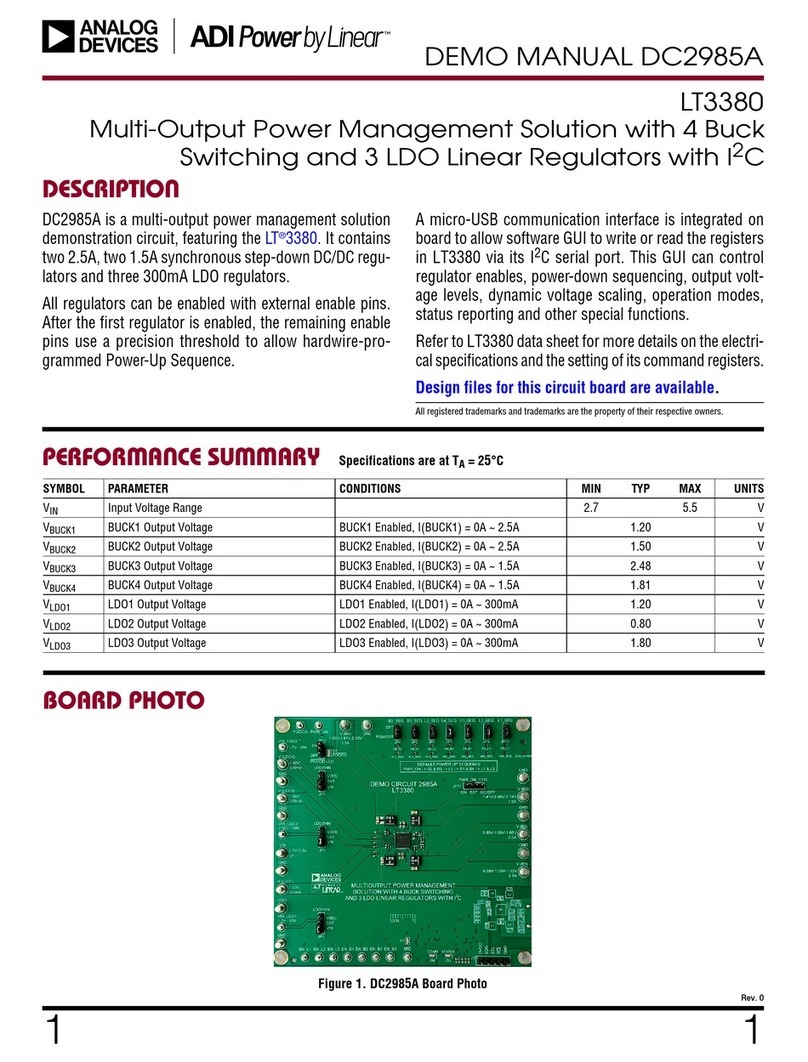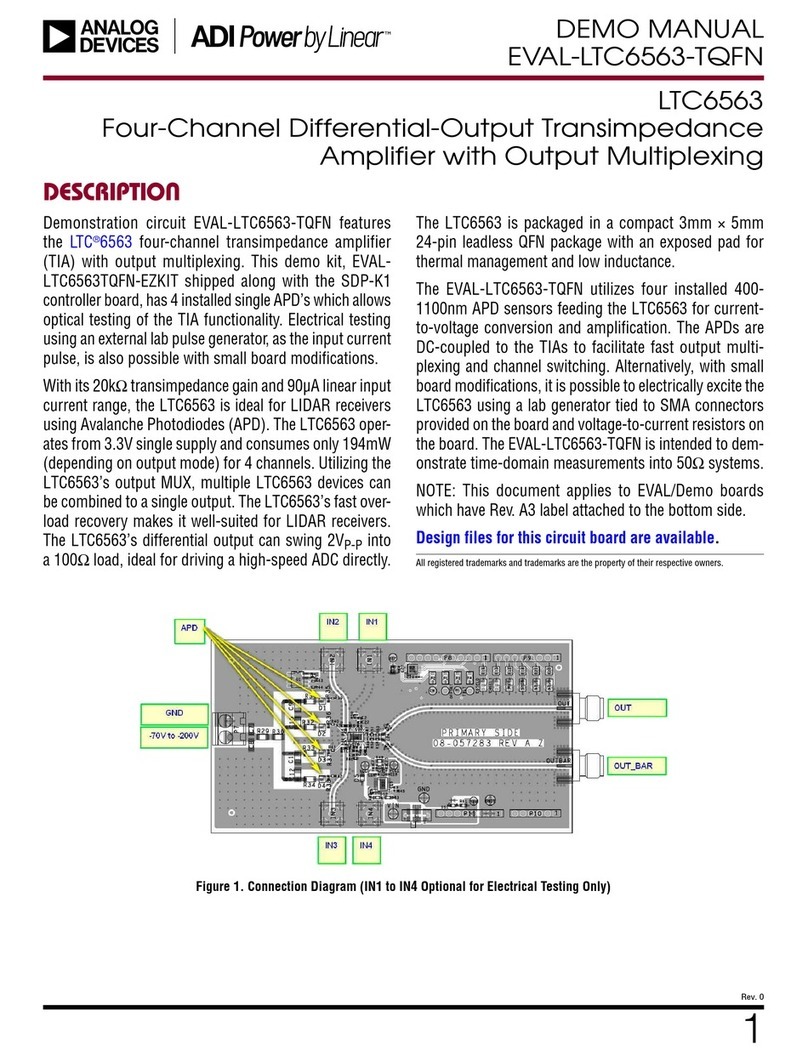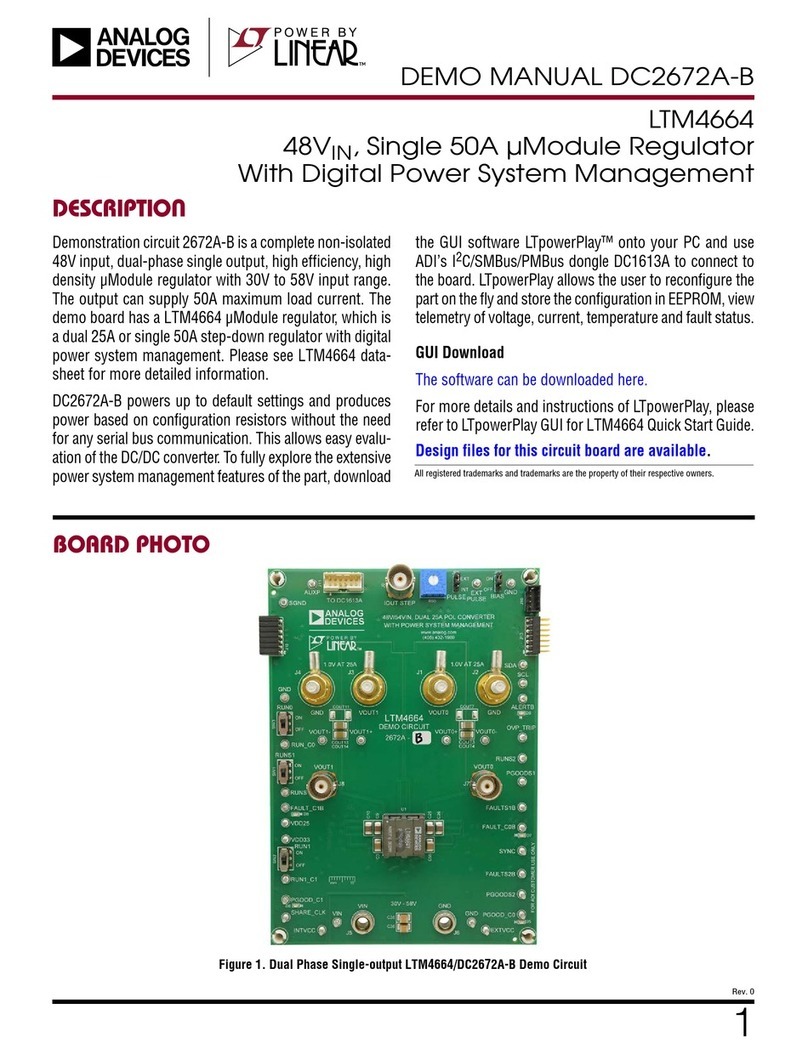
LTM4680
3
Rev. B
For more information www.analog.com
TABLE OF CONTENTS
PMBus Command Summary ............................ 45
PMBus Commands ................................................45
Table7. PMBus Commands Summary (Note:
The Data Format Abbreviations Are Detailed in
Table8) ...........................................................45
Table8. Data Format Abbreviations .....................50
Applications Information ................................ 51
VIN to VOUT Step-Down Ratios ............................... 51
Input Capacitors .................................................... 51
Output Capacitors .................................................. 51
Light Load Current Operation ................................. 51
Switching Frequency and Phase ............................52
Output Current Limit Programming .......................53
Minimum On-Time Considerations .........................54
Variable Delay Time, Soft-Start and Output
VoltageRamping ...................................................54
Digital Servo Mode ................................................54
Soft Off (Sequenced Off) .......................................55
Undervoltage Lockout ............................................56
Fault Detection and Handling .................................56
Open-Drain Pins ....................................................56
Phase-Locked Loop and Frequency Synchronization . 57
Input Current Sense Amplifier ................................58
Programmable Loop Compensation ......................58
Checking Transient Response ................................59
PolyPhase Configuration .....................................60
Connecting The USB to I2C/SMBus/PMBus
Controllerto the LTM4680 In System ....................60
LTpowerPlay:An Interactive GUI for Digital Power....... 61
PMBus Communication and Command
Processing .............................................................61
Thermal Considerations and Output
CurrentDerating ..................................................63
Tables 10 thru 11: Output Current Derating...........66
Table12. Channel Output Voltage vs Capacitor
Selection, All Ceramic Configuration, 15A to 30A
Load Step with 15A/µs Slew Rate ......................66
Table13. Channel Output Voltage vs Capacitor
Selection, Bulk and Ceramic Cap Configuration,
15A to 30A Load Step with 15A/µs Slew Rate ...67
Table14. Dual Phase Single Output Voltage vs
Capacitor Selection, Bulk and Ceramic Cap
Configuration, 30A to 60A Load Step with 30A/µs
Slew Rate ..........................................................68
Derating Curves ......................................................69
EMI Performance ...................................................70
Safety Considerations ............................................70
Layout Checklist/Example .....................................70
Typical Applications ...................................... 72
PMBus Command Details ............................... 77
Addressing and Write Protect.................................77
General Configuration Commands..........................79
On/Off/Margin ........................................................80
PWM Configuration ................................................82
Voltage....................................................................85
Input Voltage and Limits.......................................85
Output Voltage and Limits ....................................86
Output Current and Limits ......................................89
Input Current and Limits ......................................91
Temperature............................................................92
Power Stage DCR Temperature Calibration...........92
Timing ....................................................................93
Timing—On Sequence/Ramp...............................93
Timing—Off Sequence/Ramp ..............................94
Precondition for Restart .......................................95
Fault Response .......................................................95
Fault Responses All Faults....................................95
Fault Responses Input Voltage .............................96
Fault Responses Output Voltage...........................96
Fault Responses Output Current...........................99
Fault Responses IC Temperature ........................ 100
Fault Responses External Temperature............... 101
Fault Sharing......................................................... 102
Fault Sharing Propagation .................................. 102
Fault Sharing Response...................................... 104
Scratchpad ........................................................... 104
Identification......................................................... 105
Fault Warning and Status...................................... 106
Telemetry.............................................................. 113
NVM Memory Commands .................................... 117
Store/Restore ..................................................... 117
Fault Logging...................................................... 118
Block Memory Write/Read.................................. 122
Package Description ................................... 123
Table23. LTM4680 BGA Pinout.......................... 123
Revision History ........................................ 125
Package Photograph ................................... 126
Design Resources ...................................... 126
Related Parts ............................................ 126












